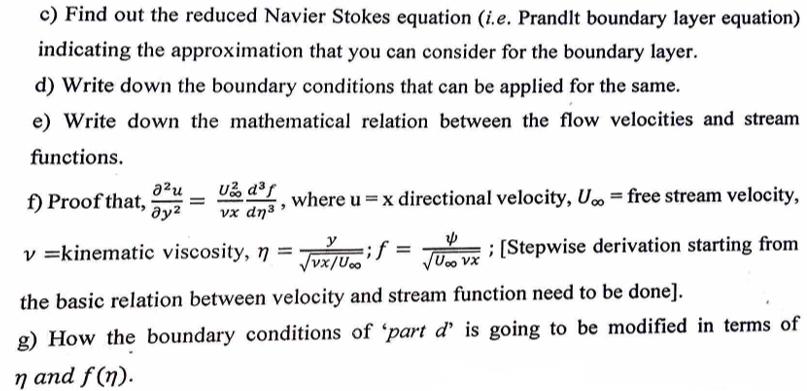Answered step by step
Verified Expert Solution
Question
1 Approved Answer
c ) Find out the reduced Navier Stokes equation ( i . e . Prandlt boundary layer equation ) indicating the approximation that you can
c Find out the reduced Navier Stokes equation ie Prandlt boundary layer equation indicating the approximation that you can consider for the boundary layer.
d Write down the boundary conditions that can be applied for the same.
e Write down the mathematical relation between the flow velocities and stream functions.
f Proof that, where directional velocity, free stream velocity, kinematic viscosity, ;; Stepwise derivation starting from the basic relation between velocity and stream function need to be done
g How the boundary conditions of 'part is going to be modified in terms of and

Step by Step Solution
There are 3 Steps involved in it
Step: 1

Get Instant Access to Expert-Tailored Solutions
See step-by-step solutions with expert insights and AI powered tools for academic success
Step: 2

Step: 3

Ace Your Homework with AI
Get the answers you need in no time with our AI-driven, step-by-step assistance
Get Started


